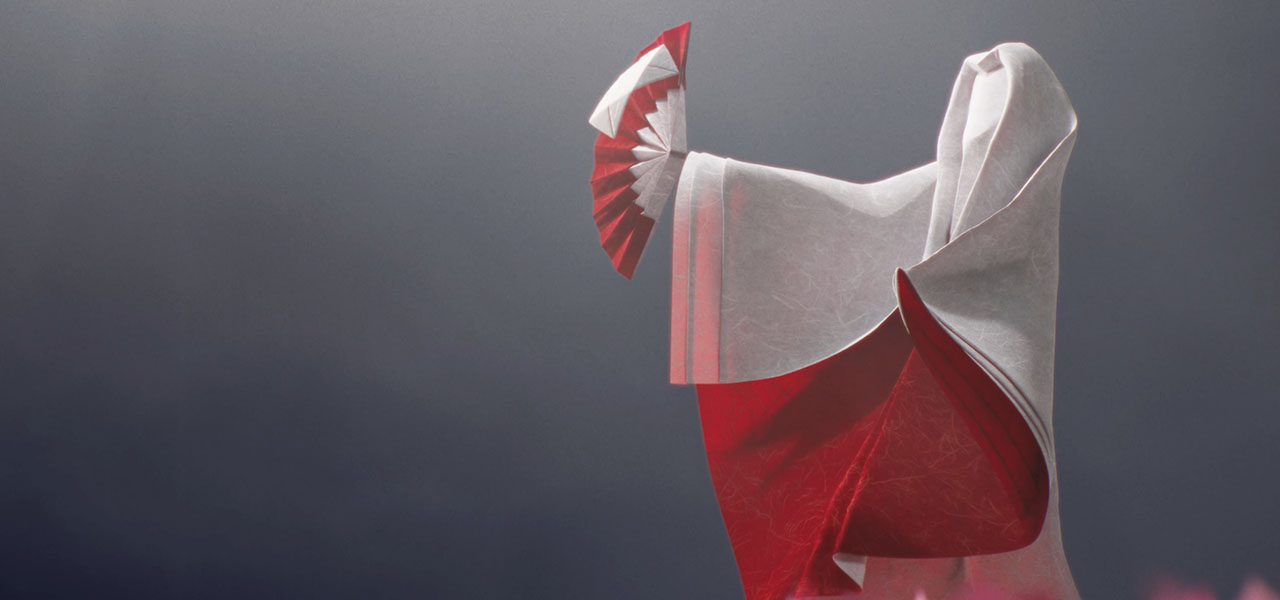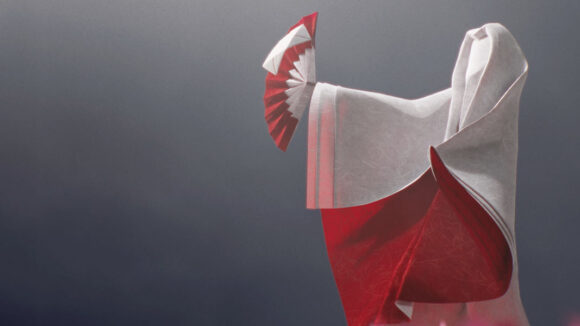

Oscar Shortlist Interviews: Director Kei Kanamori Shares His Favorite Shot From ‘Origami’ (Exclusive)
Cartoon Brew invited the filmmakers behind each of this year’s 15 Oscar-shortlisted animated shorts to share their favorite shot from their film and explain why it’s special to them. The pieces are being published in the order that materials were received.
In this piece, we’re looking at the Origami from Japanese director Kei Kanamori.
The film depicts a cg-animated origami folding and unfolding, creating a 3d sculpture from a piece of paper. Any origami can return to its original state once unfolded, mirroring life itself rising from dirt and returning to the Earth at the end of its cycle.
Below, Kanamori shares his favorite shot from the short and explains its significance to him:
This shot is my favorite moment from the film. Origami is a traditional Japanese art form that spans centuries. The first Japanese film to ever win a Student Academy Award, Origami explores the infinite ways that a simple sheet of square paper can be vividly brought to life. Every aspect of the film is based on actual skills and techniques used in origami art.
This is my favorite shot because it features some of the most beautiful origami models and explores the fascinating concept of origami. Most of the designs featured in this film are traditional Japanese origami. This shot begins with one of the most exquisite designs, the water lily, followed by the popular jumping frog.
In this short film, I aimed to showcase the art of origami with complete authenticity by using only genuine folding techniques, avoiding any tricks that wouldn’t be possible with actual paper. I have been practicing origami since I was 6, and I have applied my knowledge of this art form to develop a unique 3d animation workflow that accurately depicts origami. In addition to accurately animating the transformation of the origami, I paid special attention to the movements to convey a sense of life. For example, with the waterlily, I wanted the animation to illustrate the flowers blooming as they transformed.
The scene progresses as the main character makes her entrance, which I designed using my own origami skills. She unfolds a water lily and then refolds it into a sparrow. After that, she unfolds herself and refolds into a phoenix. Since origami does not involve cutting or gluing, any origami can be returned to its original state when unfolded. I wanted to explore this concept, reflecting the idea of life rising from the earth, returning to it, and then new life rising again.
The shot concludes with the phoenix flying away. This shot lasts over 25 seconds, although the film has much longer shots. Since origami does not involve cutting, I chose to avoid cuts during the continuous origami transformation throughout the film. In conclusion, my favorite origami models not only make an appearance, but my creative decisions also effectively communicate and explore this beautiful Japanese art form. This is why this shot is my favorite!
Read the other entries in the series:
- Loïc Espuche on Yuck!
- Torill Kove on Maybe Elephants
- Hossein Molayemi and Shirin Sohani on In the Shadow of the Cypress
- Anna Samo on The Wild-Tempered Clavier
- Iain Gardner on A Bear Named Wojtek
- Laura Gonçalves and Alexandra Ramires on Percebes
- Tod Polson on The 21
- Alexandra Myotte & Jean-Sébastien Hamel on A Crab In The Pool

.png)